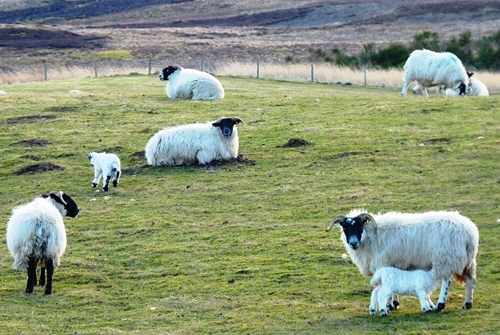Sheep health is always important, affecting welfare, farm income and the ability of the sheep to graze for conservation. But it’s particularly important for in-lamb [pregnant] ewes; we can’t affect the weather for them (please let there be a better spring this year with some grass growth…), but at least they can be well fed and diseases controlled.
 Allan Wright with the sheep in a spot of March weather
Allan Wright with the sheep in a spot of March weather
Allan Wright, Shepherd Manager at the GWCT’s Scottish demonstration farm at Auchnerran, writes:
“We’re waiting to start Heptavac [a drug to protect against a range of diseases, including pneumonia] injecting the sheep. That will take them up to lambing time and give cover to the young lambs as well. We’ve got 1,200 ewes to do. The ewe hoggs [young sheep] will get their Heptavac as well, and a bolus with trace elements. The lot will have to come in – and out – for that, and that’s probably around seven days work solid.
“We’ll start lambing around the end of April, and carry on for 35 to 40 days, and hopefully not any longer. We’ve had the flock scanned in the last week, and there were 787 singles, 299 twins, 3 triplets, and 140 dry [not pregnant]. It will be better than that in the future, but last year we had a lot of small, young ewes that weren’t able to take the tup. We tried them, but it’s probably not a bad thing they’ve been marked as dry this year, and we’ll give them another year to grow on.

“Amazingly, over the last few days the ground has started to improve. We’ve had good weather lately, but let’s just hold our breath for a little bit longer.
“And finally, about a month ago, I took the working dogs out and saw two buzzards in the field. One took off with what I thought was a bit of plastic, but it turned out to be a barn owl being carried away. There were two patches of feathers on the ground plus some fresh blood. The owl had been around for a good month in one of our sheds at– but sadly won’t be coming back.”